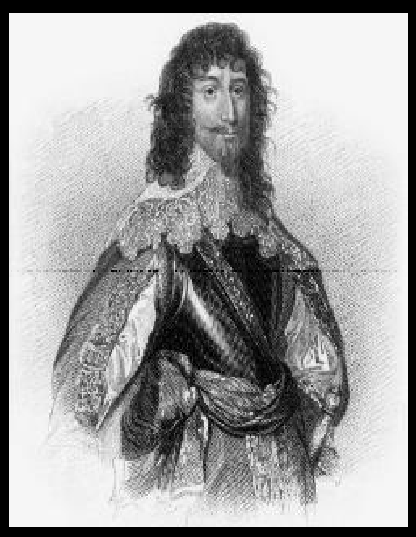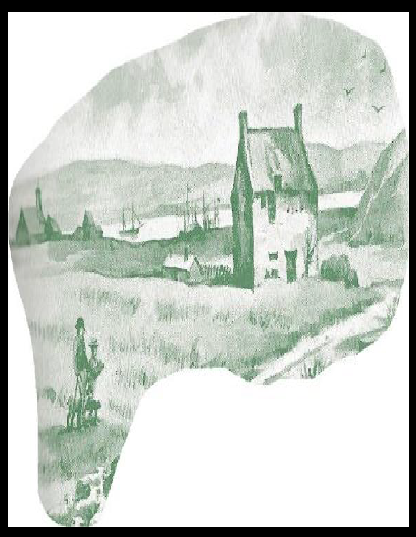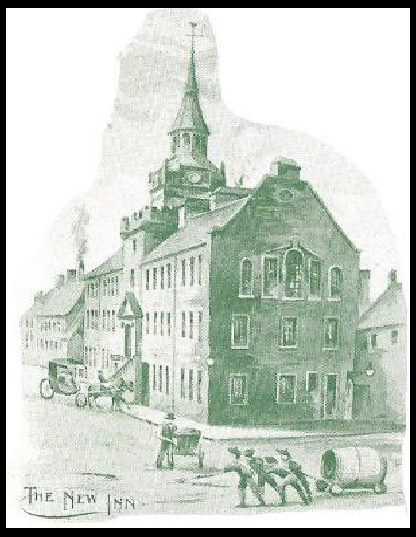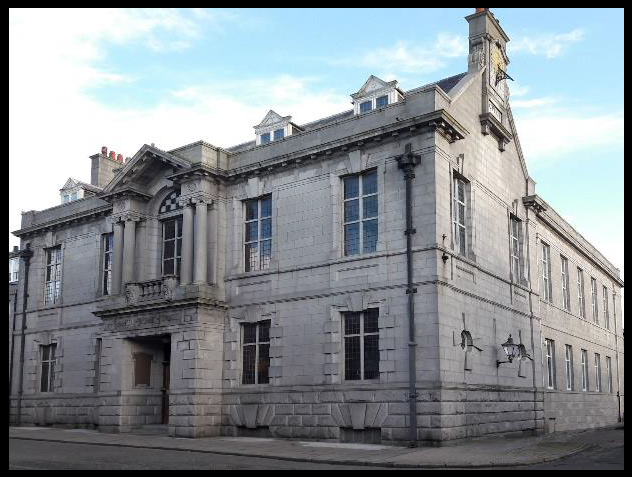A short history of the Lodge of Aberdeen No.1 ter

The Lodge of Aberdeen is one of the oldest Lodges in Scotland and has made a distinctive contribution to the history of Freemasonry. Originally an Operative, or Stonemasons, Lodge it probably predates the celebrated Mark Book of 1670 by a couple of centuries.
The first recorded Freemason in Aberdeen was Richard Cementarius (Richard the Mason) and in 1272 became the first Provost of the Burgh and is now considered to be the architect of the Big O’ Balgownie. He was followed in 1359 by a group of Masons who arrived to build St Machar’s Cathedral in the burgh of Old Aberdeen and it is thought that it was these Stonemasons who first laid the foundations of a Masonic Lodge.

The Archives of the City of Aberdeen contain the oldest in Scotland dating from 1398 and it is in the Registers dating from the mid fifteenth century that mention s continually made of the buildings being erected by a Lodge of Masons, iconic Aberdeen structures such as St. Nicholas Church (the Mither Kirk), Kings College and the Bridge of Dee (still used as one of the main entrances to Aberdeen it is the oldest continually used bridge in Scotland). The first recorded use of the word Lodge being used to describe a group of Masons as a corporate entity, was in 1485 when the minutes mention “the masons of the luge”.
In 1527 the Burgh Magistrates issued a proclamation, known as a Seal of Cause, incorporation certain crafts and granting them powers to control their individual trades. By this instrument the Masons obtained, for the first time, official recognition as a craft of the Burgh. This was re-affirmed in 1541, when a second Seal of Cause was issued giving the Lodge even more authority over its members.
Over the centuries the Lodge met in various places. The rules stated that the Brethren could not meet in a house “where people were living”, presumably so no one could over-hear what was being said. Their meeting places were therefore held in the open, in secluded places such as the sconces at the point of Ness (approximately, the area beside the lighthouse), Carden’s Haugh (on the site of the well of the Haugh now stands 87 Desswood Place) and Cunninhar Hill (in the future the Lodge was to contribute heavily in the building of the City Hospital which stood on this site). The first building the Lodge met in (probably late 16th early 17th century) was on St Katherines Hill (the top of the hill was removed to build Union Street and only the sides remain e.g. The Shiprow). This building was burned down during a riot egged on by clerics. By the beginning of the “Trubles” (a name given locally to the various early Covenanter/Bishops wars which led directly to civil wars in each of the three Kingdoms of Charles I). The Town was fined several times by each side and the various Craft Guilds had to pay their share. The town was then raped, sacked and burned by the Marquise of Montrose in 1644.

In 1648 The Marquis of Gordon (left) and his son, James second and last Viscount Aboyne raided the town and left much of it in smoking ruins, including the Lodge building. All the early written records of the Lodge were lost in the blaze which engulfed that part of Aberdeen. It is most likely that it was this fire that caused the following extract, taken from the Lodge Charter and the Charter Book of the Grand Lodge of Scotland of 1743: “it was made to appear by an extract of some of their old writings and other documents produced that year 1541, there had been a regular lodge formed in Aberdeen but the records had by accident been burned” (This was to cause a problem in 1743 when The Grand Lodge of Scotland issued the Lodge with the Roll Number 34 [order of seniority] and it was only after several appeals that in 1891 that the Grand Lodge advance the number to 1ter) But the “Trubles” were not over.

Not long after the Gordon Raid the plague invested Aberdeen. So many died that the town graveyard was closed and communal burial pits were dug somewhere east of what is now King Street. In all the population was reduced by between 30 to 50% and by the later part of the 17th century adverts were being placed in Dundee seeking masons to come and work in Aberdeen.
The Lodge reformed and grew stronger and it probably at this time that non-Operative (mainly nobility and those considered at the time to be gentlemen) members were admitted and the slow transformation from Operative or Stonemasons to Speculative Masonry began. By 1700 the Lodge was strong enough to purchase a croft called Futtiesmyre (Cotton Street/Beach Retail Park area). They built a meeting place on part of the land where they were to meet for the next fifty-five years and leased the remainder to Patrick Gibb. His son James was to become one of the most influential architects in the country and his works include St Martins-in-the Field, London and the Radcliffe Camera Oxford). The names of all of the Members of the Lodge, both Operative and Speculative Masons, were recorded in a special book called The Mark Book. It was created circa 1670, is completely handwritten, and along with the names and occupations of the Lodge Members and some Lodge Minutes, it contains a list of Rules by which the Lodge and its members were governed. Also, in the Mark Book is a list Rules to govern the benevolent side of the Lodge. The Lodge Benevolent monies were stored, with the Mark Book, in a special box (The Lockit Kist circa 1700) which has three keys. No money could be released from the box unless the 3 key keepers were in complete agreement with the disbursement. The Mark Book is in continuous use, even today, for every Brothers name is entered into it. The Lockit Kist is on display in Freemasons’ Hall Aberdeen.

Some names from the Mark Book; John Montgomerie (architect and builder of Aberdeen’s’ iconic Mercat Cross); John Skene (regarded as the first recorded Freemasons in what is now the USA); Gavin Hadden (Provost); General Sir James Leith (served under both Moore and Wellington in the Peninsular Wars – buried in Westminster Abbey); William “Sink-em” Smith (Contractor) and his son John Smith “Tudor Johnny” (City Architect. Along with Archibald Simpson he is responsible for much of Aberdeen’s granite buildings such as the North Church which is now the Arts Centre, he also designed Balmoral Castle); Brothers Pirie, Davison and Crombie (Stoneywood, Muggiemoss and Granholm Mills); Being supportive in the creation of the Grand Lodge of Scotland in 1736 becoming a Founder Member.

Several of its Members were to become Grand Master Mason the first being John, 3rd Earl of Kintore, who was the third Grand Master Mason. He then went to be Grand Master of the Grand Lodge of England, the first to do so. Freemasonry at this time blossomed and by the end of 18th Century there were about 12 Lodges in Aberdeen. In 1755 the Lodge decided that it was time to move. Land was purchased beside the then Town House/Tool Booth and on was built the New Inn. A magnificent two storey Hotel with rooms, dining areas, stables with coach park, and a further third floor with a Masonic Lodge Hall. Among the many who stayed in the Inn was Dr Samuel Johnson and his friend James Boswell during their famous tour of Scotland. Robert Burns also dined there with, and at the expense of, the Bishop of Aberdeen and Orkney. The building was sold in 1839 and Archibald Simpson had it dismantled and built in its place a bank which has now been converted to an Inn bearing his name. However, the road which the Lodge laid down to enter into the New Inn still remains. LODGE WALK.


From 1839 the Lodge met at various venues in central Aberdeen and in circa 1850 joined with other Lodges and Masonic organisations to form the Aberdeen Masonic Temple Co. Ltd. in order to erect a purpose-built Masonic Hall(s). The building (which still stands) is in Exchange Street and there they would stay until 1911 when the magnificent Aberdeen Masonic Temple (now Freemasons’ Hall Aberdeen) on Crown Street was built.
The present Members are Masons of the highest calibre and keenness and there is no doubt that the Lodge as it commences celebrating the three hundred and fiftieth anniversary of its oldest records (The Mark Book) will do so with every prospect of continuing success.
